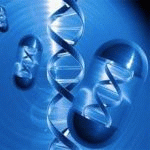Biotechnology
|
22 march 2015 05:47:40 |
| Novel pegylated silver coated carbon nanotubes kill Salmonella but they are non-toxic to eukaryotic cells (Journal of Nanobiotechnology) |
|
Tweet Background:
Resistance of food borne pathogens such as Salmonella to existing antibiotics is of grave concern. Silver coated single walled carbon nanotubes (SWCNTs-Ag) have broad-spectrum antibacterial activity and may be a good treatment alternative. However, toxicity to human cells due to their physico-chemical properties is a serious public health concern. Although pegylation is commonly used to reduce metal nanoparticle toxicity, SWCNTs-Ag have not been pegylated as yet, and the effect of pegylation of SWCNTs-Ag on their anti-bacterial activity and cell cytotoxicity remains to be studied. Further, there are no molecular studies on the anti-bacterial mechanism of SWCNTs-Ag or their functionalized nanocomposites.Materials and methodsIn this study we created novel pegylated SWCNTS-Ag (pSWCNTs-Ag), and employed 3 eukaryotic cell lines to evaluate their cytotoxicity as compared to plain SWCNTS-Ag. Simultaneously, we evaluated their antibacterial activity on Salmonella enterica serovar Typhimurium (Salmonella Typhimurium) by the MIC and growth curve assays. In order to understand the possible mechanisms of action of both SWCNTs-Ag and pSWCNTs-Ag, we used electron microscopy (EM) and molecular studies (qRT-PCR).
Results:
pSWCNTs-Ag inhibited Salmonella Typhimurium at 62.5 μg/mL, while remaining non-toxic to human cells. By comparison, plain SWCNTs-Ag were toxic to human cells at 62.5 μg/mL. EM analysis revealed that bacteria internalized either of these nanocomposites after the outer cell membranes were damaged, resulting in cell lysis or expulsion of cytoplasmic contents, leaving empty ghosts. The expression of genes regulating the membrane associated metabolic transporter system (artP, dppA, and livJ), amino acid biosynthesis (trp and argC) and outer membrane integrity (ompF) protiens, was significantly down regulated in Salmonella treated with both pSWCNTs-Ag and SWCNTs-Ag. Although EM analysis of bacteria treated with either SWCNTs-Ag or pSWCNTs-Ag revealed relatively similar morphological changes, the expression of genes regulating the normal physiological processes of bacteria (ybeF), quorum sensing (sdiA), outer membrane structure (safC), invasion (ychP) and virulence (safC, ychP, sseA and sseG) were exclusively down regulated several fold in pSWCNTs-Ag treated bacteria.
Conclusions:
Altogether, the present data shows that our novel pSWCNTs-Ag are non-toxic to human cells at their bactericidal concentration, as compared to plain SWCNTS-Ag. Therefore, pSWCNTs-Ag may be safe alternative antimicrobials to treat foodborne pathogens. |
| 160 viewsCategory: Biophysics, Biotechnology |
 Stimulated myoblast differentiation on graphene oxide-impregnated PLGA-collagen hybrid fibre matrices (Journal of Nanobiotechnology) Stimulated myoblast differentiation on graphene oxide-impregnated PLGA-collagen hybrid fibre matrices (Journal of Nanobiotechnology)Albumin nanoparticles increase the anticancer efficacy of albendazole in ovarian cancer xenograft model (Journal of Nanobiotechnology) 
|
| blog comments powered by Disqus |
MyJournals.org
The latest issues of all your favorite science journals on one page
The latest issues of all your favorite science journals on one page



